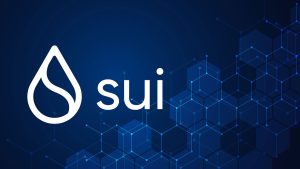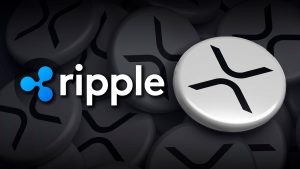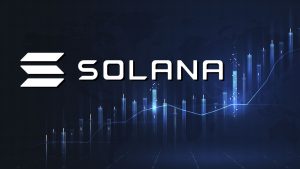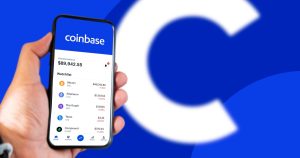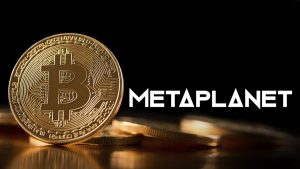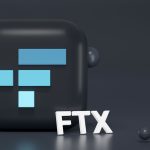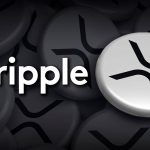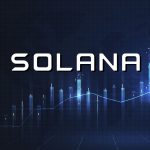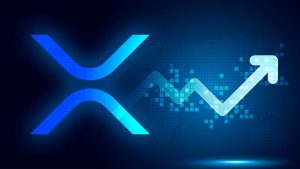The blockchain ecosystem has expanded to many sectors through different means, including tokenization. Beyond this technology’s primary use case, innovators are more proactive in harnessing its best features.
In the early days of Bitcoin and smart contracts, creating a protocol with a tradable token marked the key trend for many developers. However, the industry’s evolution is broadening many people’s horizons. Now, physical items can be created and represented using digital tokens. This has changed the game for asset ownership in increasingly digital industries.
The tokenization of real-world assets is gradually becoming a trend, and this guide will discuss this innovation and its benefits. We will also discuss protocols or platforms pushing these innovations and the blockchain networks committed to advancing this drive.
Let’s get started.
Meaning of Tokenization and Processes to Note
In the simplest terms, Asset tokenization is the process of representing the ownership rights of Real-World Assets (RWA) on the blockchain. RWAs that have gone through this process are considered digital tokens. They are unique, transferable, and verifiable.
With RWA tokenization, there is no limit to what can be added to the blockchain as a token. These recreated assets often form a digital certificate that can prove the authenticity of the underlying physical good.
One beauty of tokenization is that there are no restrictions on assets that can be tokenized. For instance, a real estate owner may store a property’s digital certificates on the blockchain. This tokenized certificate can easily be deployed in business settings, with avenues for buyers to confirm its authenticity.
The Tokenization process might be complex for the average individual, but it involves 5 basic processes. These processes include;
- The creation of the digital token
- Smart contract deployment
- Token commercialization
- Implementation of governance processes and;
- The tokens are sold in a secondary marketplace.
For more insight into these processes, please read more about them here.
The Tokenization Enablers
The blockchain ecosystem is a new world, and the tokenization of real-world assets is newer. Many traditional industries do not know about this industry, and building the capacity to harness what it offers is a rather daunting task.
To bridge the gap, entities build platforms solely to create these tokenized assets. Three of the most promising include Chainlink Oracle, BlackRock’s BUIDL, and Floki’s TokenFi.
Chainlink Oracle
Chainlink is a versatile Oracle service provider whose offering amplifies the tokenization agenda and other blockchain needs. Although built on the Ethereum blockchain, it has evolved to serve other networks with its Cross Chain Interoperability Protocol (CCIP).
The whole tokenization agenda is mostly built around data availability. Accurate, timely, and updatable data is required to represent assets on the blockchain effectively. This is where Chainlink comes in. Although many Oracle service providers exist, Chainlink is the most used.
Since tokenization enhances asset tradability, the Chainlink Proof of Reserve can help affirm the liquidity or backing capital for any asset class. Chainlink helps in removing the risk that might be associated with trusting an asset that has no significant value.
BUIDL From BlackRock
BlackRock is a top financial giant gradually deepening its foothold in the blockchain and Web3 ecosystem. With the launch of BUIDL, it is specifically looking to make a difference in the Real-World Asset tokenization scene.
BUIDL is the financial giant’s first tokenized fund built on a public blockchain. Designed with Securitize Markets LLC, this finance-focused product aims to give investors an avenue to earn U.S. dollar yields by subscribing to the Fund through Securitize.
Since BlackRock has made a name for itself in the crypto world, it becomes easier to convince its Wall Street clients to embrace tokenized funds. With BUIDL accruing more than $500 million in Assets Under Management (AUM) thus far, it proves the extent of the embrace of the product and tokenization in general.
TokenFi
TokenFi is not actively running yet; however, it marks a major step into the tokenization world through the memecoin project FLOKI. The primary goal behind the TokenFi platform is to help creatives facilitate the creation of tokenized products. It hopes to do this cheaply and simplified through its native asset, TOKEN.
The TokenFi platform will further expand on Web3’s core tenets. This includes redistributing rewards generated from the platform to TOKEN holders. Users of the platform can also stake TOKEN to reap additional rewards.
While Chainlink is an encompassing tool for all markets, while BlackRock brings tokenization to Wall Street, TokenFi aims to cater to all users through the power of memecoins.
Best Blockchains For Real-World Asset Tokenization
The industry has thousands of Layer 1 and Layer 2 networks today. While many pride themselves in being versatile, only a handful have showcased dedication to the RWA revolution. Here are some of these protocols and what they bring to the table;
VeChain:
VeChain is an enterprise-grade Layer-1 protocol designed for tangible applications. While it started by directly integrating the Internet of Things (IoT) and smart contract applications, it now fully tokenizes RWA assets.
VeChain is big on climate, sustainability, agriculture, and other real-world enterprise applications of blockchain technology. One major thing about VeChain is that it decentralizes some of its solutions, so there will be no overlap. VeChain is not just helping to revolutionize the RWA agenda; it is also bringing efficiency to those driving it.
Synthetix:
Synthetix is a pioneering Decentralized Finance (DeFi) and liquidity service protocol for creating synthetic financial products. This is an important gap to bridge at a time when most innovators are concentrating efforts on centralized models.
The Synthetix operational model is complex yet simple. The Synthetic assets hosted on the platform are backed by collateral provided by stakers using the platform. Combining the core tenets of Liquidity Pools with tokenization, Synthetix is simultaneously serving different markets across the board.
OriginTrail:
OriginTrail is a trusted knowledge infrastructure whose service is foundational in tokenization. This protocol focuses on addressing misinformation and helping users discover real-world assets.
The RWA ecosystem is evolving rapidly, and users may miss the most important innovations in the space. OriginTrail is trying to address this with its Parachain and Decentralized Knowledge Graph. These solutions help fuel AI-powered searches for organizations around the world.
With a substantive database of RWA protocols, users can get started with ChatDKG, an answer bot still under development.
TrueFi:
TrueFi is a new-generation platform with a new approach to lending and borrowing. With TrueFi, anyone can create interest-bearing pools that offer high APR for Liquidity Providers (LPs). TrueFi users are offered TrustTokens (TRU) to contribute to the platform.
The TrueFi platform also gives everyone a say in who can borrow funds from the pools. TRU plays a key smart contract-enabled role in rating the creditworthiness of third parties.
Maker:
Maker is one of the key pioneers of tokenization with a direct stablecoin solution. The Maker Protocol is a platform where users can issue and manage DAI, a stablecoin. DAI commands a capitalization of over $5.3 billion, all pegged to the US Dollar.
While Maker caters directly to the crypto ecosystem, it helps confirm many innovations are possible onchain. The first is tokenization money, and the second is the DAO governance for which DAI is used.
As the innovators behind Maker built the protocol as a smart contract-controlled product, so can anyone else.
Benefits of Tokenization
Inclusivity
Accessing investment products in today’s world is quite complicated. Besides the high cost of engagement and technicality in navigating the investment landscape, many users are left out. RWA tokenization can put an end to this and enable everyone to own assets in a simple and inclusive way
Innovation
The blockchain ecosystem that enables RWA tokenization is innovative. As a result, it will likely support the unique ideas that many innovators hope to bring to life through asset ownership. Since blockchain technology is still evolving, what new things will emerge for RWA remains unknown.
Unleashes a New Economy
There is a chance that the RWA tokenization revolution will unleash a whole new economy for all. Before Satoshi Nakamoto created Bitcoin, no crypto exchanges, smart contract applications, or oracles powered crypto innovation. When Bitcoin launched, a whole new market emerged, and it has been evolving to date. The same trend might emerge for RWA tokenization as well. As this use case of blockchain technology evolves, innovators will launch new platforms and products for the benefit of all.
Decentralization of Ownership
With RWA, the concept of fractional ownership becomes evident. When innovators tokenizes a digital asset or any real-world item, different people can own a part of it. This decentralization of ownership will be crucial in revolutionizing many industries, especially the real estate ecosystem, in the long term.
Asset Security and Sustainability
Digitizing documents can preserve their value in the long term. Using blockchain to tokenize real-world assets might make them more secure. Notably, users cannot tamper with verifiable certificates or other tokenized products.
Transparency
Blockchain technologies are records that are available to the public and easily verifiable. This feature is a game changer that can help keep RWA innovators in check. Participants in an RWA ecosystem can vet their investment and check details about the project themselves.
Drawbacks of RWA Tokenization
Despite the positivity around tokenization, there are also some limitations. Besides the fact that the development of RWA is still at the institutional level, it is about a decade away from mainstream adoption.
Also, the digital currency and blockchain ecosystem could be more complex than expected. Under the current design, adoption might need to be faster, which is a bottleneck that calls for proactive, innovative design overall.
Disclaimer: The information provided in this article is for informational purposes only. It does not constitute investment, financial, trading, or any other sort of advice. You should not treat any of BGECrypto’s content as such. BGEcrypto does not recommend that any cryptocurrency should be bought, sold, or held by you. Do your due diligence and consult your financial advisor before making decision.






